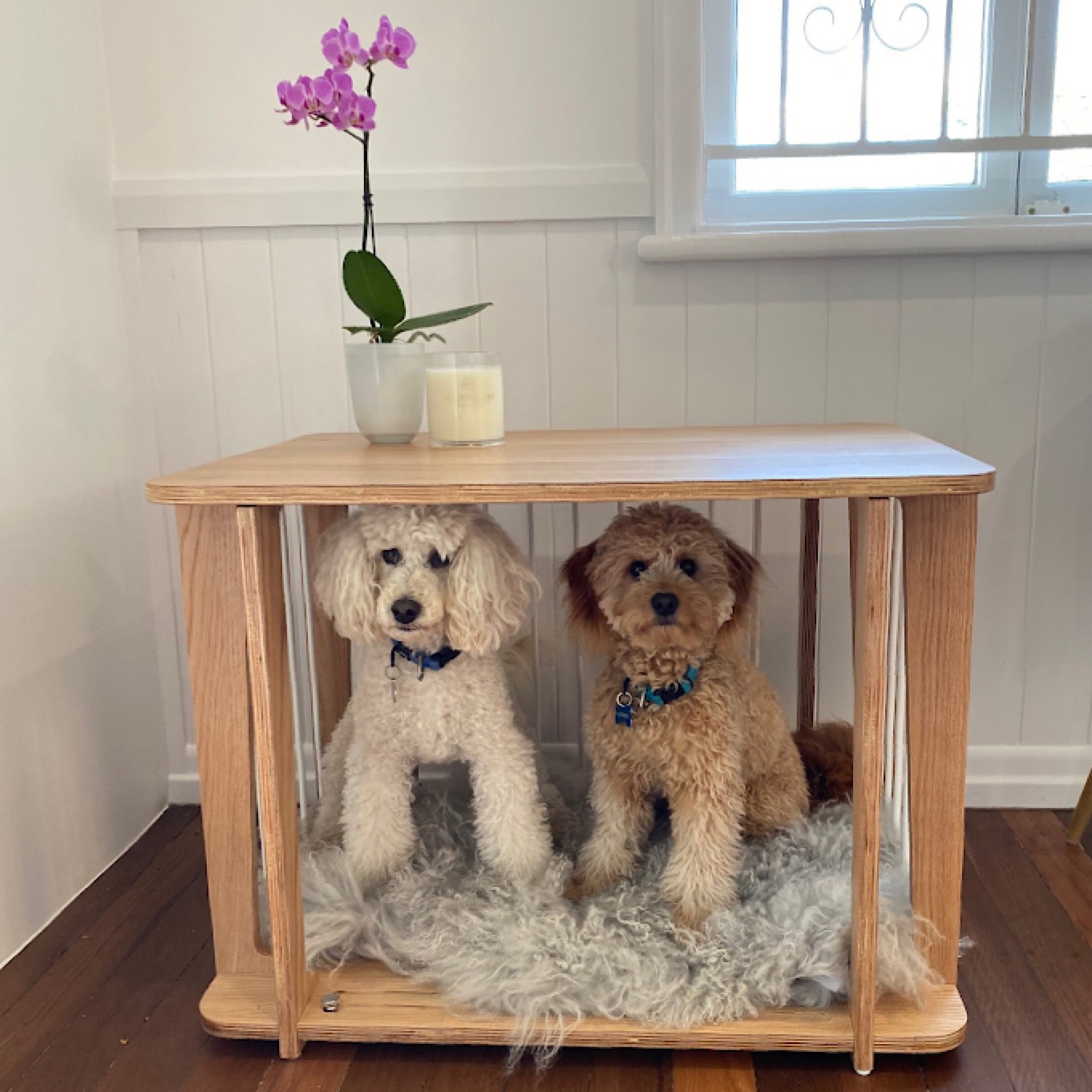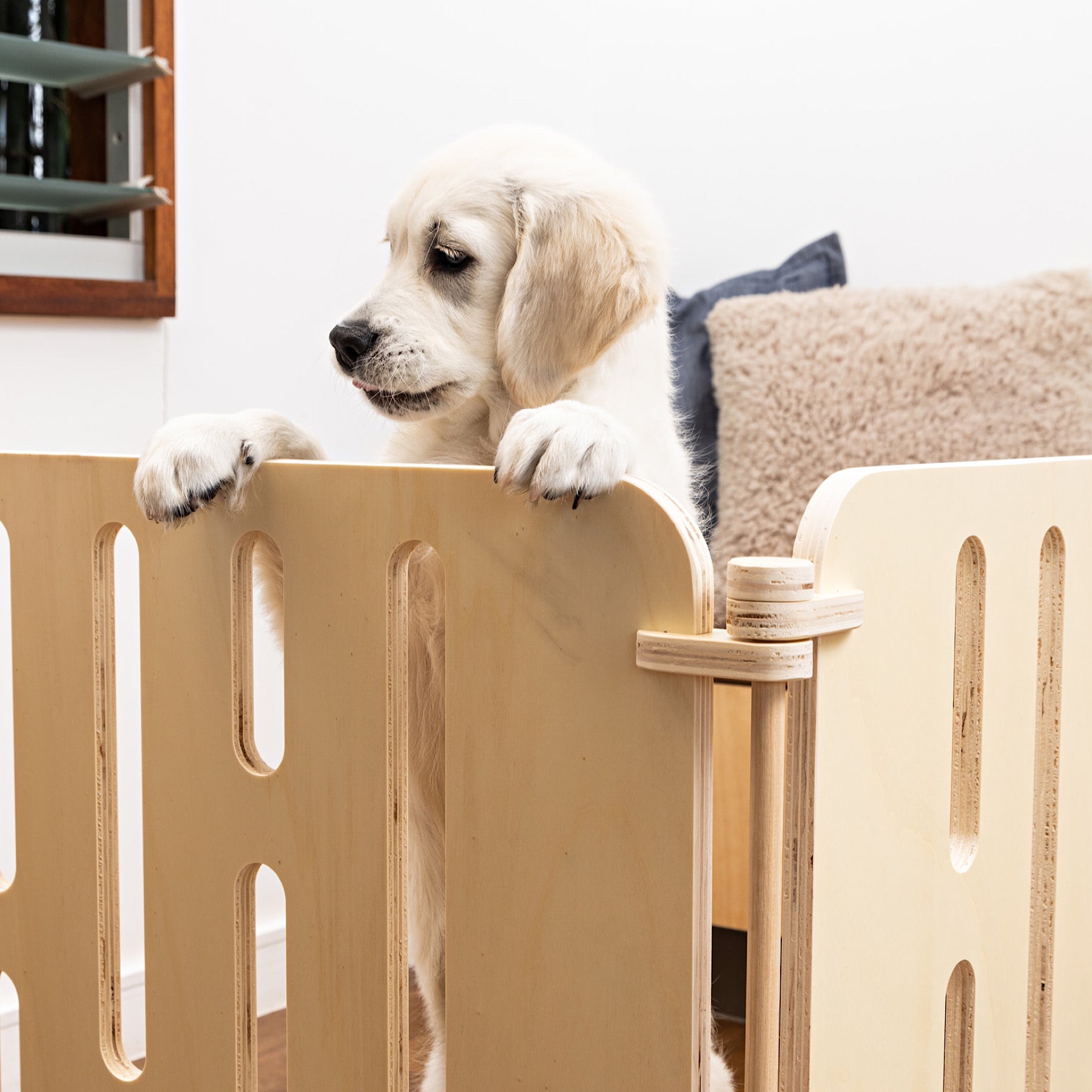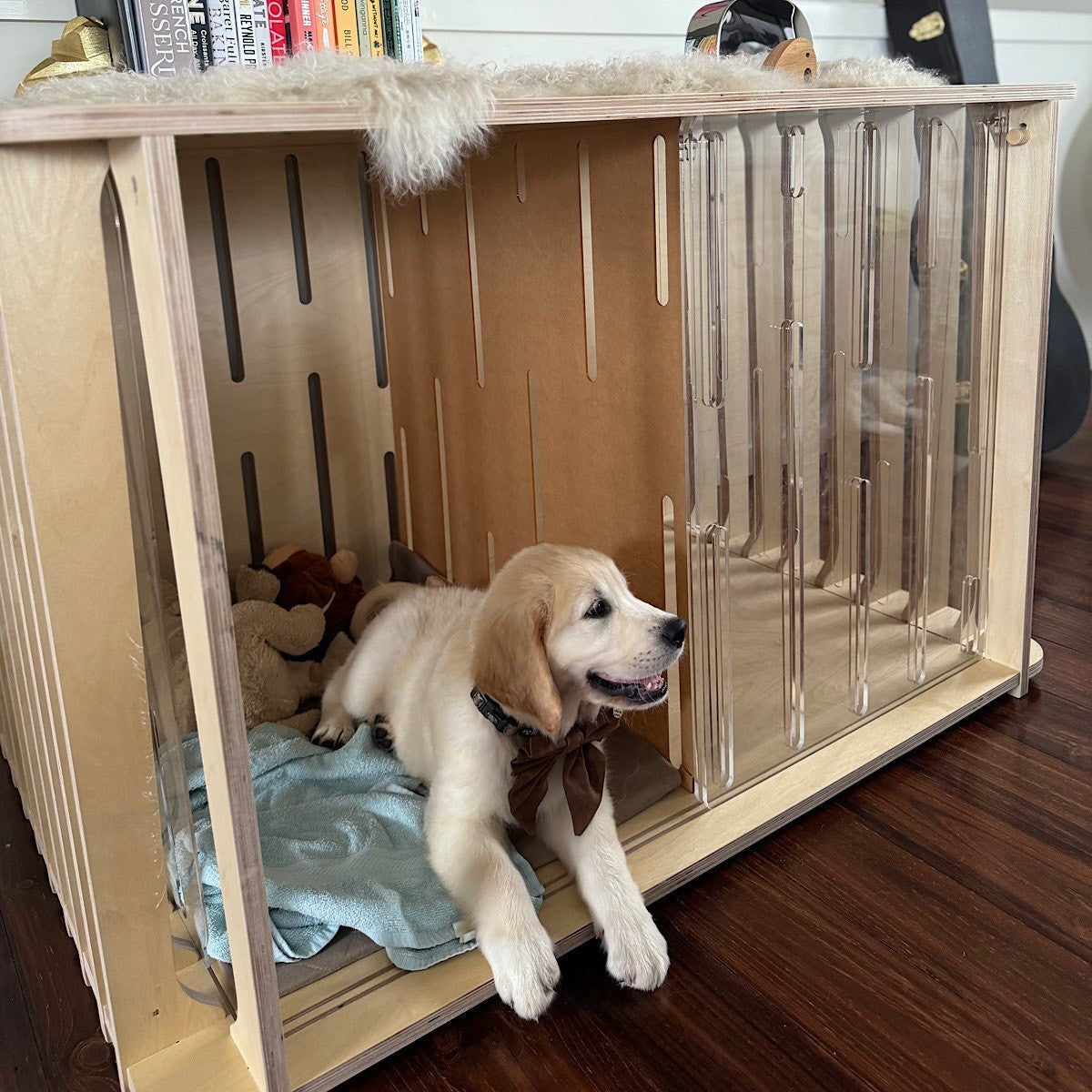
Vets in the Village love crate training. Here's why.
Guest author Dr. Ellen Finney from Vets in the Village shares here what she loves about crate training and her top tips.
Does your pet love to hide under your bed and couch? Do they quietly take themselves off to hang out in their crate? Do they sometimes prefer this than sitting with you? Because mine certainly does. If I’m looking for Paddington, the first place I always look is in his crate.

This is a very common phenomena we see in pets! And it’s all because of the ‘Denning Principle’. To understand this, we need to look back to their wild ancestor heritage.
Denning is a behaviour that is deeply ingrained in dogs and refers to their natural tendency to seek out a safe and secure location to rest and sleep. In the wild, dogs use dens or burrows as a safe space to protect themselves from predators and harsh weather conditions. This instinct is still present in domesticated dogs today. By sleeping under things, they create a small, enclosed space that provides them with the sense of security they need to rest.
This principle explains why dogs prefer sleeping in a crate, as these spaces simulate the feeling of a den or burrow and provide them with the same sense of security and comfort.
As a veterinarian, I can’t stress enough the benefits of crate training. Not only does it provide the type of safe and comfortable space they seek out naturally, but it also teaches boundaries helping with toileting training, separation anxiety and destructive behaviour.
As a puppy, crate training limits access to the rest of the house helping prevent undesirable chewing behaviour. It also helps to teach toilet training as dogs are naturally very clean animals who choose not to soil where they sleep. As an adult, it provides a great way to keep your dog out of trouble when you are not at home or unable to provide supervision! It also provides a safe form of travel in the car. And perhaps most importantly from a veterinarians perspective, crate trained dogs cope better when confined to a hospital beds when they are sick or come in for desexing. For all these reasons, I strongly recommend crate training for dogs of ALL ages and cannot stress the benefits enough.
So, how do you crate train your dog? Here are my top tips:
- We want to make the crate your dogs favourite area of the house with lots of toys, treats and blankets. Remember we a creating a safe space your dog enjoys and wants to spend time in - Remember that size matters. Use a create big enough for your pet to stand up in, turn around and lie down comfortably
- Gradually introduce the crate slowly with short sessions, slowly increasing the time your dog spends in the crate
- Keep the crate in a familiar area so your pet feels comfortable
- Allow your pet open access to the crate at all times of the day
And finally, my number 1 rule. The create should NEVER EVER be used for punishment. The crate is a den, not a prison. The only time the door should be closed and locked is for conferment at night or in your absence.

From a veterinarians perspective, crate training is a valuable tool that can improve the lives of both your dog and yourself. When implemented correctly, it offers security, helps to reduce destructive behaviour and teaches toilet training. Above all else, a crate provides your best friend with a safe home they deserve - the perfect den!




Leave a comment
This site is protected by hCaptcha and the hCaptcha Privacy Policy and Terms of Service apply.